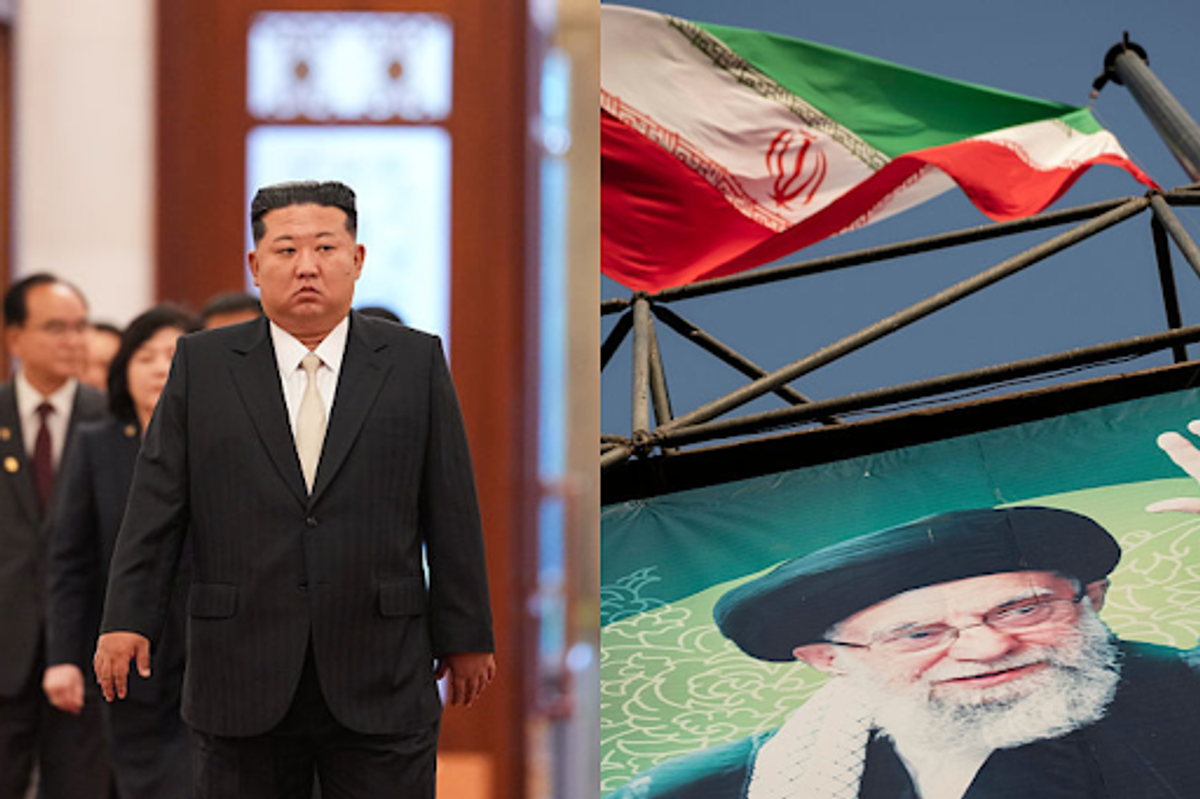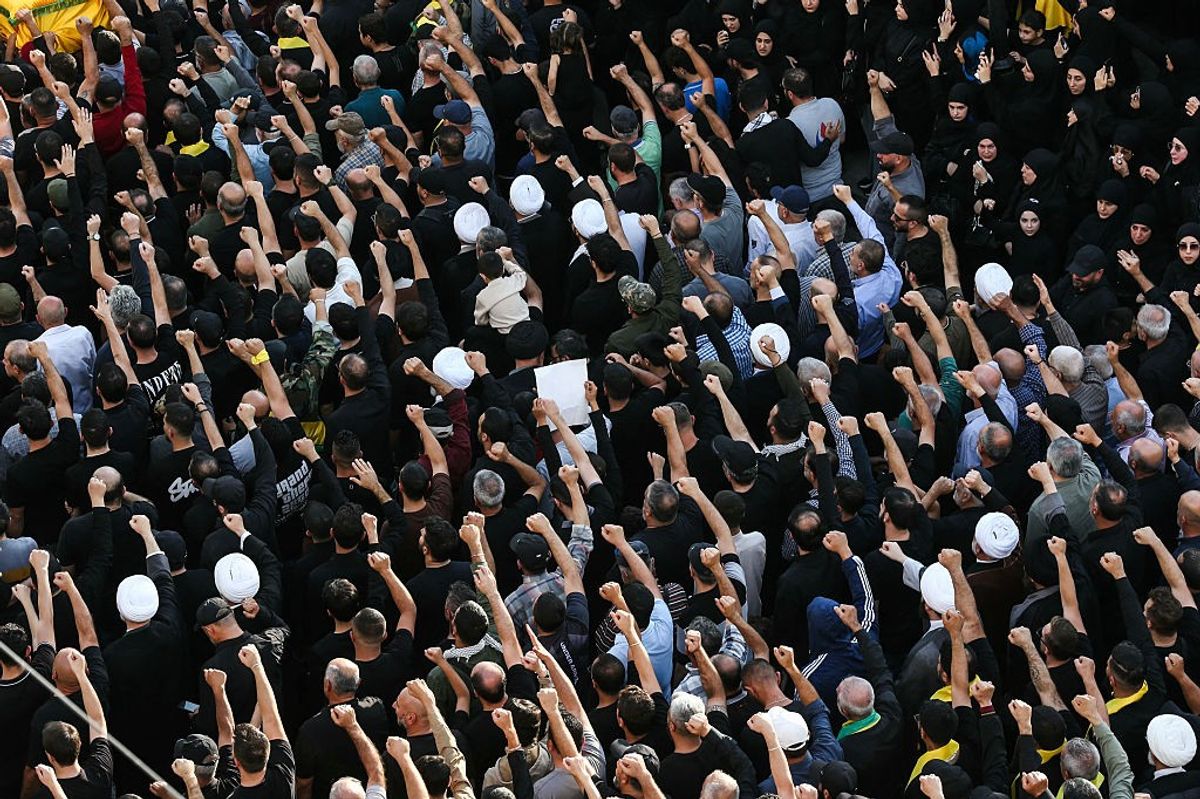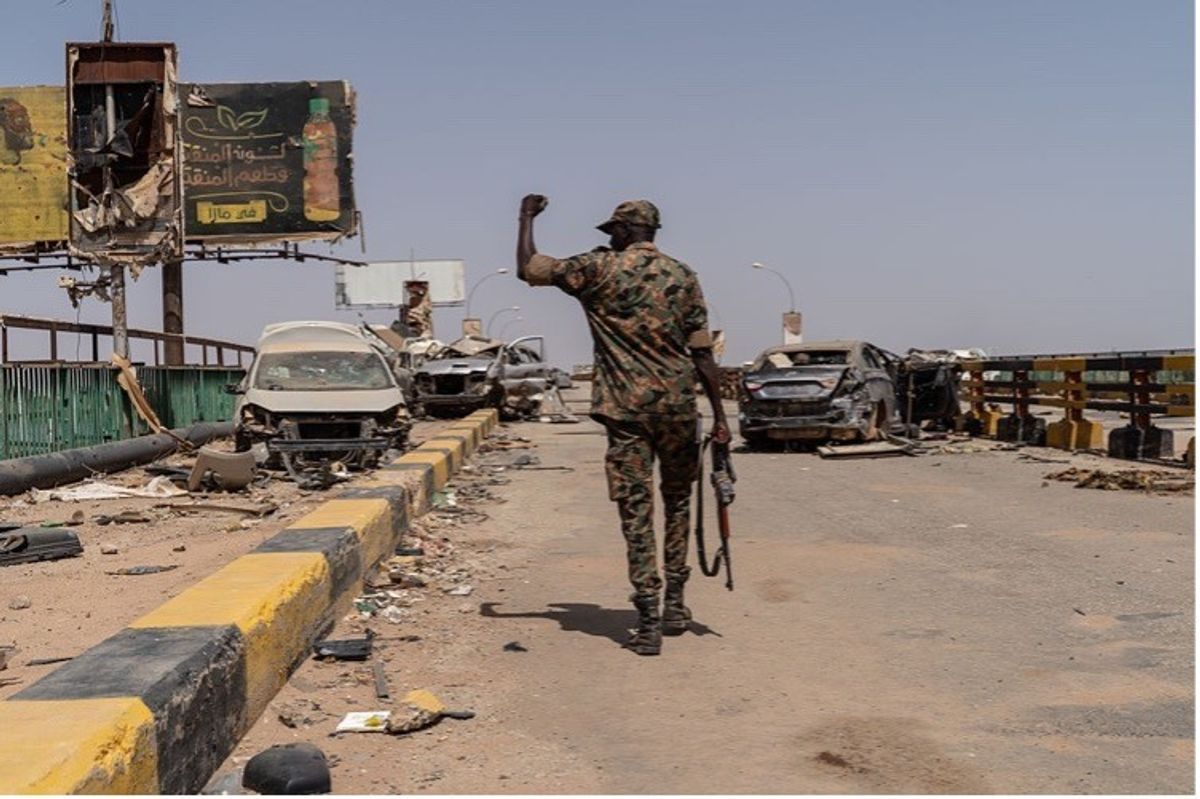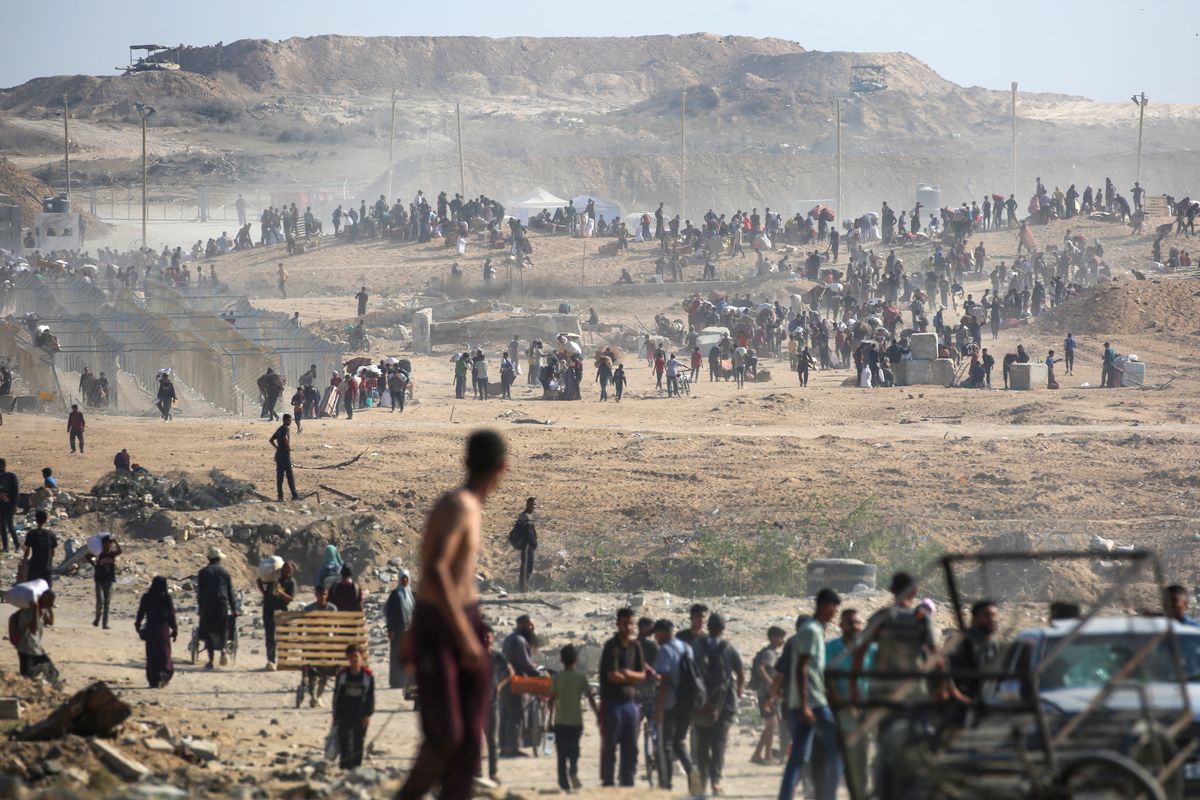MEMO TO THE PRESIDENT — After Donald Trump’s victory in the November 5 election, The Cipher Brief invited experts from our network to offer advice for the president-elect, on any one of the many national and global security challenges that he will find in his inbox, As we have said often recently, it’s an almost unprecedented array of current and potential crises, none of which will be easy to resolve.
Our ask of the experts was straightforward: If you were given the opportunity of a short visit with the president during his first days in office, what message would you want to deliver?
Given their different backgrounds and areas of focus, the answers cover a broad range. John McLaughlin, a former acting director of the Central Intelligence Agency, offered a roadmap for the president for the ever-complex - and increasingly dynamic - state of play in the Middle East. President-elect Trump has given hints at his own approach, at times suggesting more aggressive U.S. engagement (pressing for a speedy resolution of the Gaza war), and at others calling for a less heavy American footprint in the region (arguing that the U.S. military is overstretched, and that the U.S. must devote more attention to the China challenge). With all this as a backdrop, McLaughlin’s Memo to 47 advises Trump to decide in the early days of his second term how much American effort and resources to deploy to the Middle East – while being mindful that “the U.S. cannot – with deference to Hollywood – do ‘everything, everywhere, all at once.’”
Mr. President-elect:
Your administration will soon face a reality experienced by nearly all its recent predecessors: Try as Washington might to look away or pull away from the Middle East, the region just won’t be ignored. For years, the United States has sought to “pivot” to Asia or, as recent National Security Strategy documents have put it, to orient toward the “pacing challenge” of China and the “acute threat” of Russia. Consistent with this, the Biden administration resisted increasing the small deployment of U.S. forces in Iraq and Syria following the chaotic withdrawal from Afghanistan in 2021.
Then, on October 7, 2023, the Hamas attack on Israel triggered region-wide battles, both overt and covert, threatening to pull the U.S. into the wider conflagration that could ensue. As a result, American energy, resources, and attention have once again swiveled toward the region.
The recent Israel-Hezbollah ceasefire offers a glimmer of hope if it holds, but no end is in sight for the broader conflict. And the question of how to bring peace to the region will land right in the lap of your administration in less than two months’ time.
A matter of priorities
Your first decision will be a basic one: what priority to give the region. One of the lessons I took from serving at senior levels in government, with a lot of time spent in the White House Situation Room, is that the U.S. cannot – with deference to Hollywood – do “everything, everywhere, all at once.” I’ve seen well-meaning and dedicated senior officials work tirelessly in both Democratic and Republican administrations but falter in the face of more than two or three huge complex multinational crises unfolding simultaneously.Our national security system was forged in the early days of the Cold War to deal – not with a globalized world – but with a single overriding enemy (with this in mind, a bipartisan group of senior officials called for reform of the system in a 2008 report that gained little traction).
So your administration will have to decide whether to stay as entangled with the Middle East as President Biden has been (Secretary of State Antony Blinken has traveled to the region at least 11 times since Oct 7, 2023, and CIA Director William Burns has also made frequent trips).
I am mindful that you did pay a lot of attention to the Middle East during your first term; your first foreign visit was to Saudi Arabia, your team brokered the Abraham Accords that normalized Israeli relations with for four Arab countries, and you mounted a policy of “maximum pressure” on Iran that included the 2020 killing of Iranian Revolutionary Guard general Qassem Soleimani.
Through all of this, however, you did not focus much on the conflict between Israel and the Palestinians. Back then, Palestinian-Israeli relations were at a low simmer compared to the current tensions stemming from the Israeli-Hamas-Hezbollah war. But if you follow through on your stated ambition to end the war quickly, you will inevitably come up against this long-standing impediment to peace.
The two-state solution – and 5 steps to get there
In 2018, you endorsed the long-sought “two-state solution” and in 2020 put out a plan that envisioned a Palestinian state with limited powers and circumscribed by Israeli security provisions. More recently, in April, you said you had favored the two-state formula in the past but thought it would be much harder to achieve today.
I believe you are right. The many western political leaders who, when speaking of solutions, still default to the two-state solution may be mentally stuck in the year 2000. They recall that it almost worked then. I was briefing then-President Clinton in that last year of his administration, during which Clinton focused intensively on the situation and brokered nearly successful negotiations at Camp David.
In those talks, then-Israeli Prime Minister Ehud Barak offered then-Palestinian chief Yasser Arafat a deal that included 73 percent of the West Bank and 100 percent of Gaza immediately, and 92 percent over the following 10-25 years. Barak included a highway linking Gaza to the West Bank and said Israel would dismantle all but the largest settlements.
Participants still debate the reasons for failure, but I believe disputed jurisdiction over Jerusalem was at the core of the problem. The Palestinians demanded complete sovereignty over East Jerusalem and its holy sites; the Israelis conceded custodianship but no sovereignty. This was compounded by Arafat’s failure to put any serious bargaining points on the table.
Is the two-state construct still even imaginable? Maybe, but it would require at least five changes. The first is a prerequisite that has so far proved elusive. The other four are essential but very hard to achieve.
First, the parties must agree to a broader ceasefire and the return of hostages. This could be a moment of opportunity for such a deal. Israel has decapitated both Hamas and Hezbollah through the killing of their respective leaders (Yahya Sinwar and Hassan Nasrallah), and it has substantially degraded the fighters they commanded. It has also shown Iran that Tel Aviv will not be intimidated by the unprecedented state-to-state attacks Iran has mounted. Your new administration gives the context for a fresh start.
Second, movement toward a two-state construct would require a different Israeli government. Netanyahu’s six-party far-right coalition (Ehud Barak in 1999 headed a seven-party center-left government) tilts so heavily against the two-state model that it would never seriously endorse it. Last year, Netanyahu’s government appropriated about 9 square miles of the West Bank for settlements – which some opponents say is the single largest chunk of territory ever marked for this purpose.
Israel would need to stop adding settlements and begin reducing the ones that are already there. Back in 1999, Israeli settlements comprised only 2 percent of the West Bank. Today the figure is around six percent, with about 570,000 Israelis living there, compared to 176,000 in 1999. It is now hard for Palestinians in the West Bank to move from town to town without going through a series of Israeli checkpoints. It is no longer a largely contiguous piece of territory that can qualify as a potential state.
Third, the Palestinians would need to bring their constituent parts together in order to negotiate. The Palestinian Authority in the West Bank, and what remains of the Hamas-dominated Gaza population will have to organize under some new leadership enjoying majority support among Palestinians. Back in 2000, Arafat could claim plausibly to speak for the Palestinian majority.
Fourth, and most important, both sides would need to reestablish a sense of security. Without that, no progress is possible. Back in 2000, the CIA had been serving for several years in an honest broker role between Israeli intelligence and what were then three Palestinian security services (for the West Bank, Gaza, and external issues). This helped build a modicum of confidence on both sides. It is work that someone – diplomats, military, or intelligence officers – would have to replicate today. And it would take time and would have to allow for setbacks.
This litany does not cover more obvious issues such as rebuilding of Gaza, which would require Arab country assistance both diplomatically and financially.
For the U.S., all this would add up to an investment of diplomacy and other efforts that would consume enormous amounts of time, energy, and resources in a world that is demanding U.S. attention on China and problems elsewhere, such as Ukraine. Which is why your administration’s first Middle East decision must be what priority to give the region – and with what ambition in mind.
A one-state solution?
When Middle East hands think through the hurdles to overcome for a two-state solution, it often leads to discussion of the feasibility of a unitary state – a one-state solution in which Israeli Jews, Israeli Arabs, and Palestinians would concoct a governing arrangement permitting them to co-exist in a single state. Given that Israeli Arabs and Palestinians together now slightly outnumber Israeli Jews – roughly 6.8 versus 6.5 million – and given the struggles that would ensue over issues of democracy and equal rights, this could be even harder than the two-state model. But left to drift over years, some messy unitary situation does seem almost inevitable. Demography has a way of becoming determinative.
Without conscious effort toward a two-state or one-state model in the region, the outlook is almost certainly for continued and inconclusive tit-for-tat battles of varying intensity between Israelis and Palestinians, especially if Iran and its proxies remain capable of stoking the fight. And all the while, there would be recurring pressure for the U.S. to step in to deter escalation. In the process, this kind of future for the region is virtually certain to restock the ranks of terrorist groups of various persuasions.
All of that is why you probably will not be able to give the region short shrift in weighing your priorities. Believe the old saying: what starts in the Middle East does not stay in the Middle East.
You will need to designate a senior official for Middle East peace – someone with standing in the region and who is seen to report directly to you. A person who wakes up every morning thinking only of how to bring peace and stability to the region.
The devil will always be in the details – details that have defeated many prior drives for peace – but the overarching strategy should be clear from the outset: to find ways to build confidence between the Israelis and Palestinians, to work for normalization between Israel and Saudi Arabia, to begin the work of rebuilding Gaza, to encourage creation of a credible governing authority for the Palestinians, and to create the conditions that once again allow both sides to envision peaceful co-existence – in two states or one.
This of course will be a mammoth job and possibly the work of generations. But it may be the only way to ensure that the region does not keep dragging your administration away from other global problems that pose even greater challenges to U.S. interests.
Read more expert-driven national security insights, perspective and analysis in The Cipher Brief.














